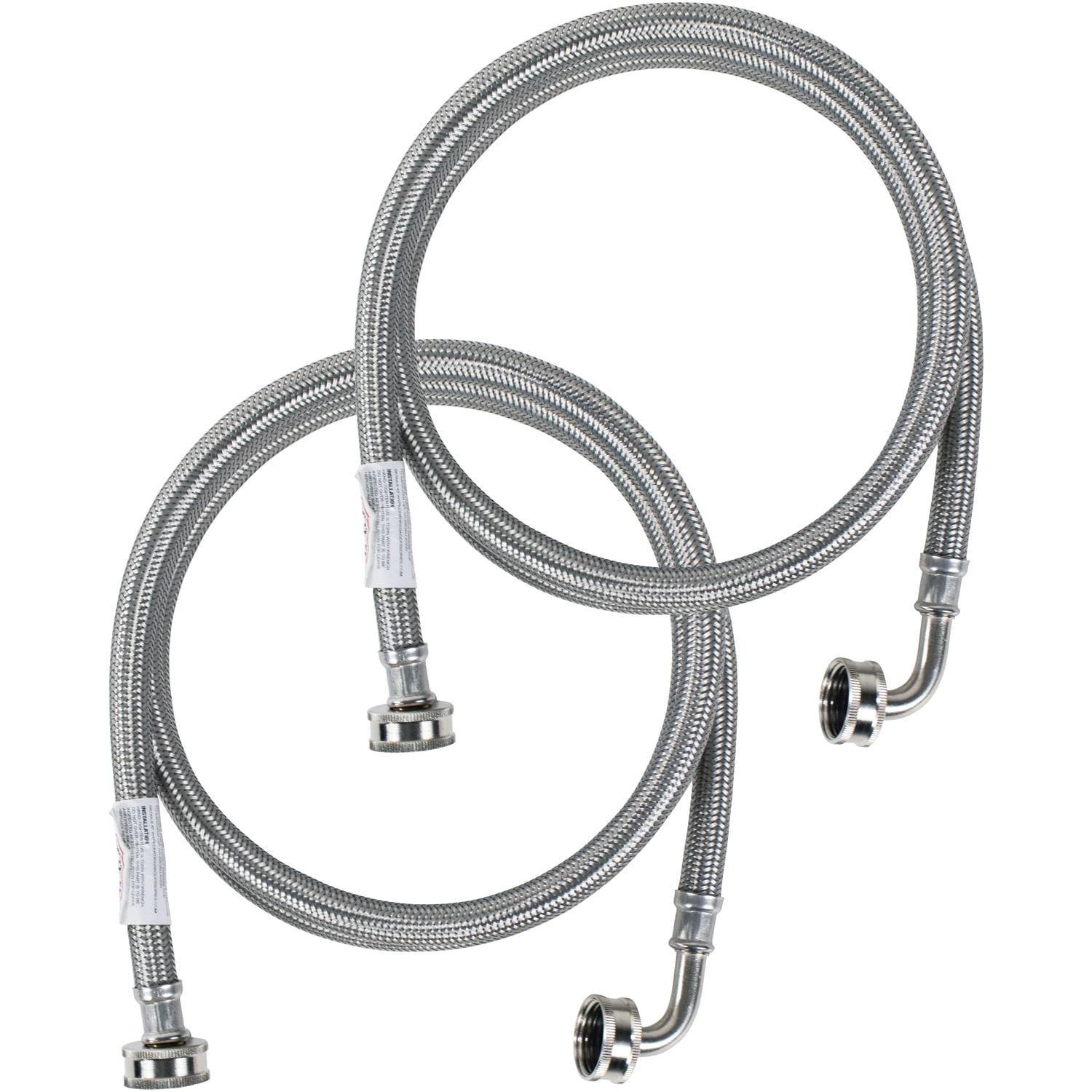
Before switching the power back to the washing machine, make sure the hoses aren’t twisted or bent, which can hasten wear and tear. If no leaks are spotted, plug in the washing machine and push it back into place, ensuring there’s at least four inches between the unit and wall.Turn the water supply valves back on and thoroughly check for any leaks.The hoses are color coded to match the hot and cold water valves, with red for hot and blue for cold. Using the same method, connect the hose to washing machine fittings. Connect the new hoses to the water supply valves, first hand tightening before using pliers to secure.Remember to turn the hose’s fittings clockwise, using pliers when necessary. After draining each line and cleaning up any spills, remove each hose from its water supply valve. Compare prices for replacement washing machine hoses, washing machine cold water hose extensions, connectors and connections. Remove one hose at a time from the back of the washing machine, using the bucket to drain excess water from the line. Grab an empty bucket and some old towels.Turn off the water supply at the valves located on the wall behind your washing machine.Carefully move the washing machine away from the wall, giving yourself enough space to access the water valves, hoses, and back of the washing machine.

After, unplug the machine’s electrical cord from the outlet. Before touching the hoses, turn off your washing machine by cutting the power at the breaker box.
#Washing machine hose install
Whether installing reinforced rubber or steel braided washing machine hoses, these are the steps necessary to install your new washing machine hoses. Once detected, the connector at the end of the hose prevents water from pouring out of the valve, minimizing the damage incurred by a broken hose. Some stainless steel washing machine hoses come with an auto shutoff feature that can detect the increase in pressure caused by a hose burst.

Rubber supply lines aren’t industry standard and are generally not recommended. Rubber-Rubber hoses are the least durable and lose much of their flexibility and strength over time, resulting in corrosion and cracks that lead to leaks or busted hoses.Typically, washing machines hoses fall under three categories: When selecting washing machine hoses, safety and durability should be considered. Over time, this rubber washer starts to wear down and loosen, allowing water to seep through. 3/4 x 5 Washing Machine Braided Hose Connector Product Image. Worn rubber washer-A rubber washer sits at the end of the hose, sealing the supply valve and preventing water from leaking out of the hose. This category contains a variety of washing machines hoses.This can be prevented by leaving at least four inches between the wall and washing machine. A hose can also leak or burst if it’s twisted or bent during installation. Installation errors-During installation, if a hose connector isn’t correctly fitted and tightened to the water valve or washing machine, a leak could form.Poor water quality-Poor water quality, particularly hard water, can corrode the inside of the washing machine hoses and cause sediment build-up.This wear and tear on the hoses is caused by high water pressure and a hydraulic shock known as a water hammer, which increases the water pressure to the hoses after a cycle completes. Wear and tear-No matter what type of washing machine hose you select for your home, all will undergo normal wear and tear as they age and eventually need replacement.You can get a hose that has an elbow at the end to prevent this problem. In tight spaces, when the hose may become bent or kinked, the braided stainless steel can dig into the hose underneath. Push the washing machine back into place, leaving at least four inches of space between the machine and the wall so the hoses don’t kink. Tighten all four connections until you feel strong resistance, then slowly turn on the water supply to check for leaks. Make sure that the washer is properly placed in the hose connectors and attach the new hoses. Place a bucket under the connection to catch any water and use a pipe wrench to remove the old hoses. The smaller ones are what you’ll be replacing. There will be three hoses: a large drain hose and two smaller ones (for hot and cold water). Unplug the washing machine and pull it out from the wall. Run the washing machine for a few minutes to drain any remaining water out of the hoses. Buy proper lengths of stainless steel-braided hoses with auto-shutoff.


 0 kommentar(er)
0 kommentar(er)
